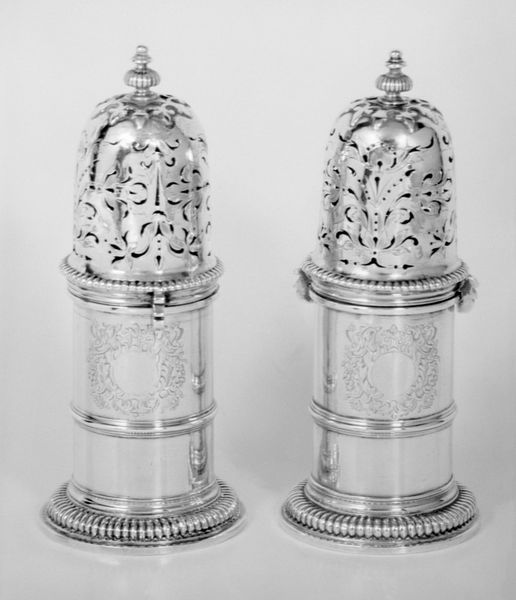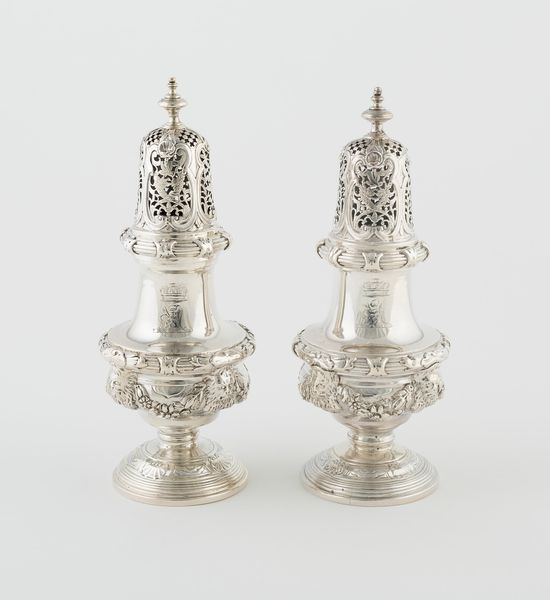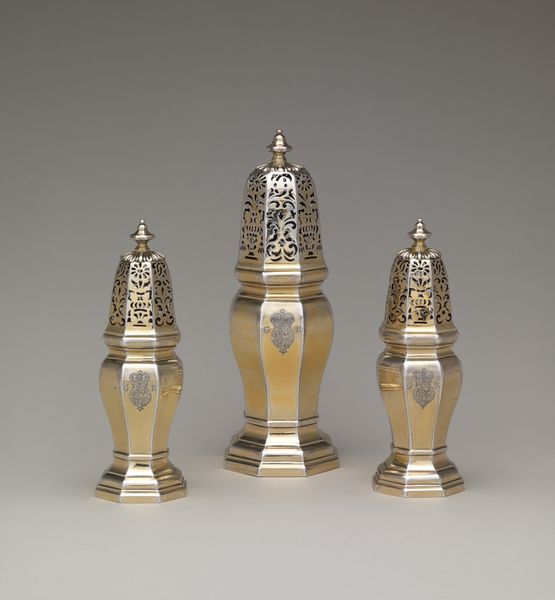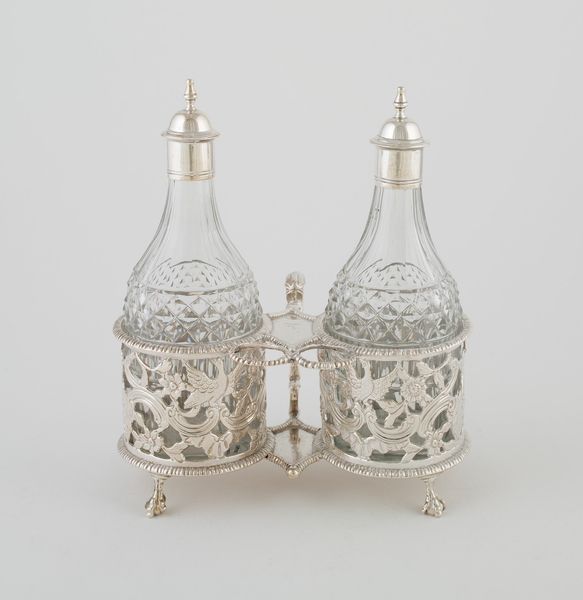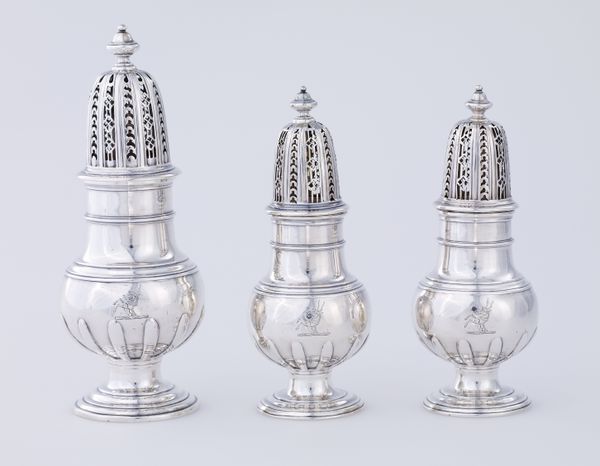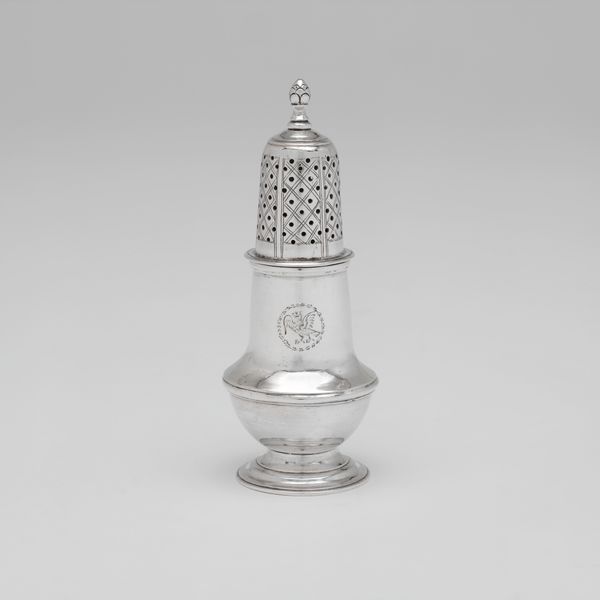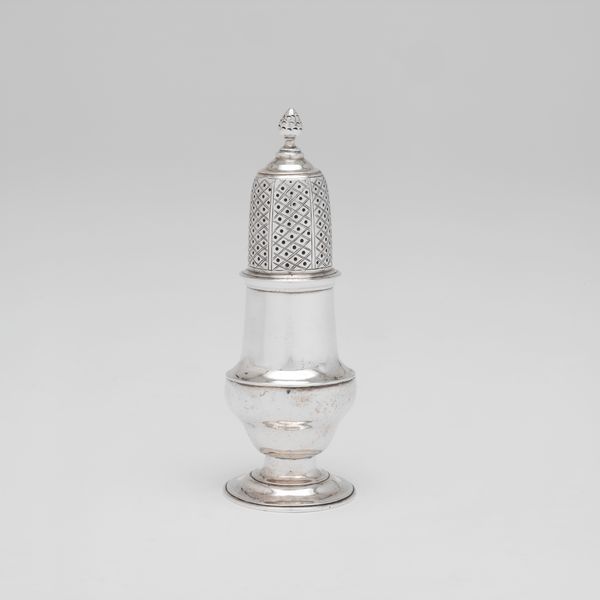
silver, metal, engraving
#
silver
#
baroque
#
metal
#
decorative-art
#
engraving
Dimensions: A: 19.4 × 7.9 cm (7 1/8 × 3 1/8 in.); B: 14 × 5.7 cm (5 1/2 × 2 1/4 in.); C: 14 × 5.7 cm (5 1/2 × 2 1/4 in.)
Copyright: Public Domain
Curator: Welcome. Let’s examine "Three Casters," crafted between 1701 and 1702. These decorative objects reside here at the Art Institute of Chicago. The pieces, wrought in silver, exemplify Baroque decorative art. Editor: My first thought is… such restrained opulence! These silver casters evoke a sense of formal meals, rituals of serving, and an almost performative elegance associated with upper-class life in that era. Curator: Precisely! The form echoes classical architecture adapted into domestic ware, and the engraving introduces elements referencing a new emphasis on naturalism popular at the time. These details reflect shifting socio-cultural values. Editor: How do these forms reflect that power dynamic in early 18th century? I see these pieces embodying the rise of a certain leisure class, reflecting global trade in spices as symbols of luxury and cultural dominance. Curator: Absolutely. Silver's own history—mining, trade routes—reflects colonial enterprise, a critical lens we must remember when interpreting status displays from that time. Editor: Exactly. The details can speak volumes – how food presentation evolved, reflecting access to global resources that reinforced privilege and, quite frankly, oppression elsewhere. Curator: Though we celebrate their refined beauty, it’s essential that we acknowledge the broader historical implications embedded within these luxurious table objects. The silver reminds us of the extraction. Editor: Agreed. These “Three Casters” are stunning pieces of decorative art, however, we should critically examine what their craftsmanship and usage truly represent in socio-political history, their existence intimately intertwined with inequalities. Curator: Right, and through continued discussions like this, we hope our listeners can begin to expand how they look at the historical narrative behind these beautiful, yet loaded, pieces. Editor: That’s it exactly; context matters! I'm glad we took the opportunity to unravel some of these loaded questions.
Comments
No comments
Be the first to comment and join the conversation on the ultimate creative platform.
